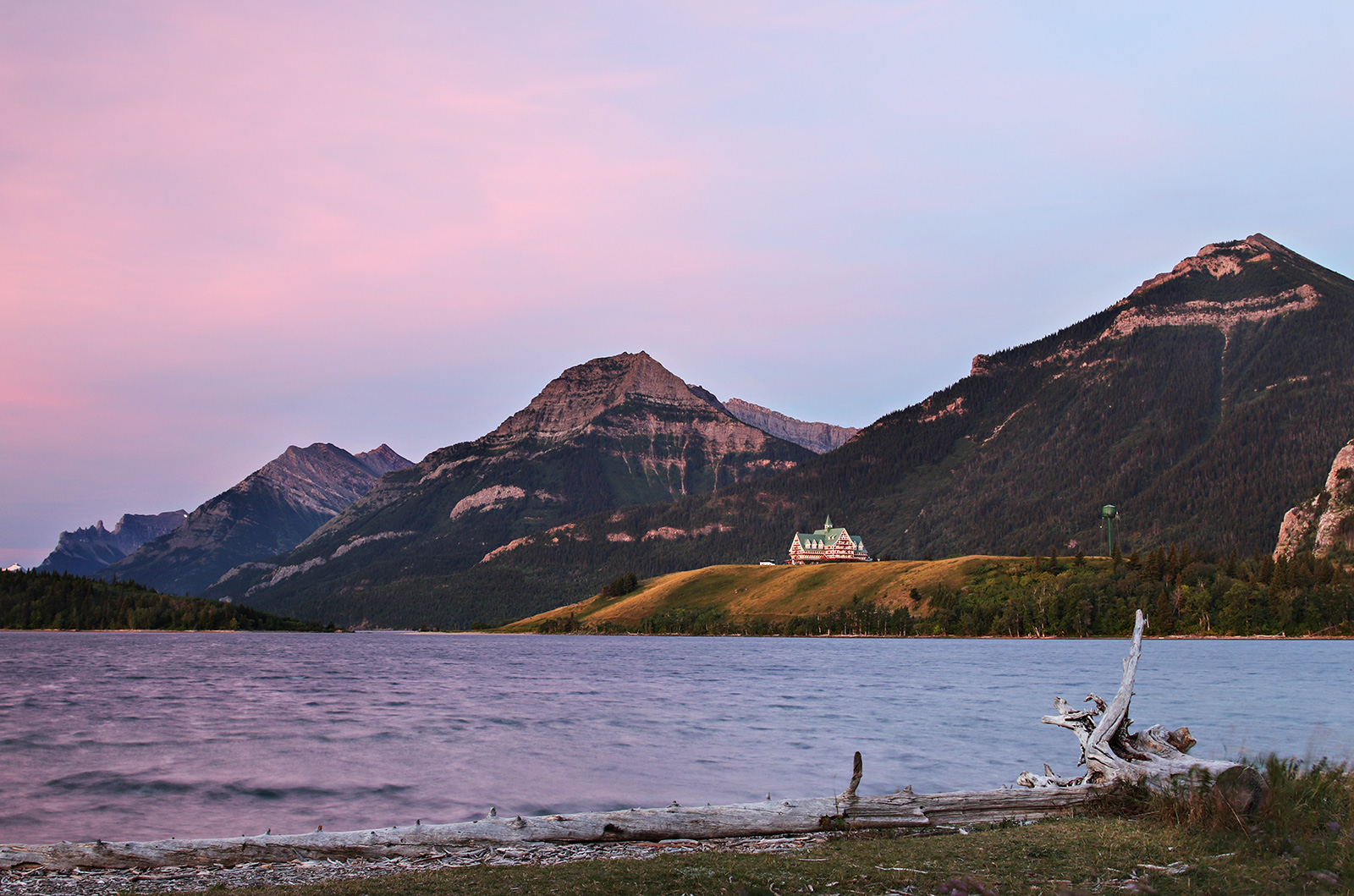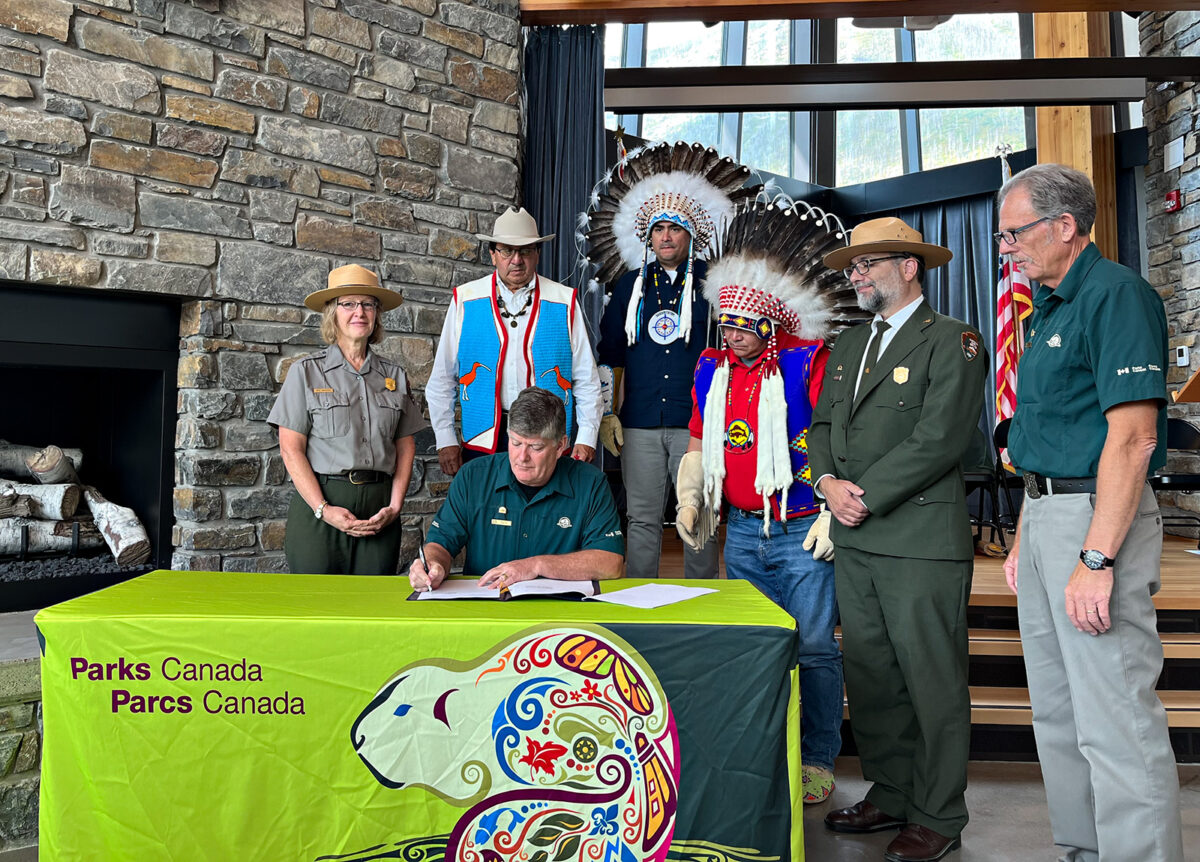
National Park Service, Parks Canada Renew Commitment to Collaboration with Indigenous Neighbors
The agencies will continue commitments to the protection, presentation and management of cultural and natural heritage along shared transboundary places and co-stewardship with Indigenous people
Representatives from the National Park Service and Parks Canada joined Indigenous leaders on Aug. 9 at Waterton-Glacier International Peace Park to renew a longstanding transboundary relationship and prioritize the co-management of public lands between the federal agencies and their Indigenous neighbors.
The event was hosted by Parks Canada and the National Park Service (NPS), two agencies with a collaborative history stretching back more than a century. That relationship, which was formalized under a previous Memorandum of Understanding (MOU) in 1998, was underscored by the selection of the summit’s location at Waterton-Glacier International Peace Park, which in 1932 was designated as the first international peace park and is included on the UNESCO World Heritage List.
“Parks Canada is the National Park Service’s oldest international partner,” said NPS Director Chuck Sams, who attended the event virtually and, as an enrolled member of the Confederated Tribes of the Umatilla Indian Reservation, is the first Native American to lead that agency. “I’m honored to renew our commitment to collaboration and enrich and enhance our shared missions of stewardship.”
The two agencies also affirmed their shared commitment to Indigenous-led conservation initiatives, the co-stewardship of public lands and increased collaboration with tribes and First Nations.
Indeed, with the support of Sams and Interior Secretary Deb Haaland, the first Native American to lead a Cabinet agency, co-management, or co-stewardship, initiatives between public land managers and tribal and First Nation partners are in the midst of a renaissance.
Earlier this week, Glacier National Park announced it had received $300,000 from the Inflation Reduction Act (IRA) and the Bipartisan Infrastructure Law (BIL) to restore natural habitats and address climate change impacts. A portion of the funding will pay for studies in cooperation with the Blackfeet Nation and other partners to monitor and analyze pre- and post-environmental conditions associated with the Blackfeet-led reintroduction of bison on lands adjacent to the park.
On June 26, as part of the Iinnii Initiative, the Blackfeet Nation released a small herd of bison from their captive herd into the Chief Mountain (Ninnaastakoo) area of the Blackfeet Reservation near the U.S.-Canada border. The Iinnii Initiative is a collaboration led by the Blackfeet Nation to restore free-ranging bison (‘iinnii’ in Blackfeet language) to the landscape after a 125-year absence. Glacier National Park and Waterton Lakes National Park have been active participants in the Iinnii Initiative, with leaders from both parks in attendance during the Blackfeet bison homecoming.
On Wednesday, the two agencies signed a new MOU outlining their continued collaboration on the “protection, presentation, and management of cultural and natural heritage along shared transboundary places and co-stewardship with Indigenous people,” according to a press release.

Those in attendance at the signing included NPS intermountain regional director Kate Hammond, Parks Canada CEO Ron Hallman, Glacier National Park Superintendent Dave Roemer, Waterton Lakes National Park Superintendent Locke Marshall, Siksika Nation council member Samuel Crowfoot, and Siksika Nation Chief Ouray Crowfoot, who opened the event with a welcome address.
“For over a century, Parks Canada and the National Park Service have worked closely together on protecting and presenting some of the most beautiful natural spaces and interesting historical places in North America,” Hallman said. “Through partnership and collaboration that transcends borders, we are committed to modern approaches to conserving our natural and cultural heritage in ways that advance Indigenous stewardship and more fully include diverse perspectives in commemorating our respective histories. By signing this agreement, Parks Canada and the National Park Service are renewing our shared commitment to working together towards common goals.”
The MOU reaffirmed several interagency priorities including:
- Indigenous-led conservation and increased collaboration with Indigenous peoples
- Advancing nature-based climate solution and climate change adaptation
- Connecting people to history and nature
- Park management and operations, visitor experience and safety, natural and cultural resource conservation, and wildlife management
The decision to sign a new MOU came from discussions between Hallman and Sams at recent meetings of the North American Wilderness and Protected Areas Committee, a group that provides opportunities for collaboration and information sharing among protected area managers in Canada, Mexico and the United States.
Parks Canada was established in 1911 and the agency currently administers more than 450,000 square kilometers of protected lands stretching across the country. The National Park Service, founded in 1916, oversees the nation’s 425 national parks, preserves, monuments, and other protected areas to “help preserve local history and create close-to-home recreational opportunities.”
The National Park Service has a long history of international collaborations, including more than three dozen partnerships between individual national parks and international counterparts, offering additional opportunities to discuss and share information about commonly-faced issues. In addition to Waterton Lakes, Glacier National Park has sister-park relationships with Killarney National Park in Ireland and Gorkhi-Terelj National Park in Mongolia.